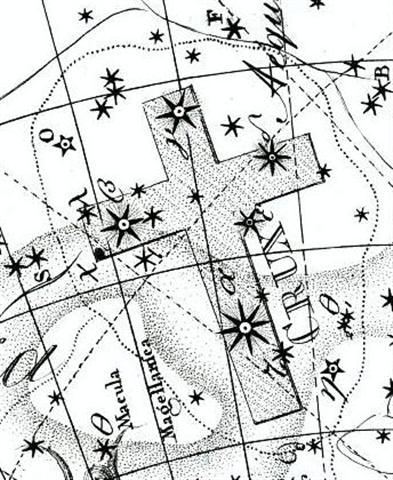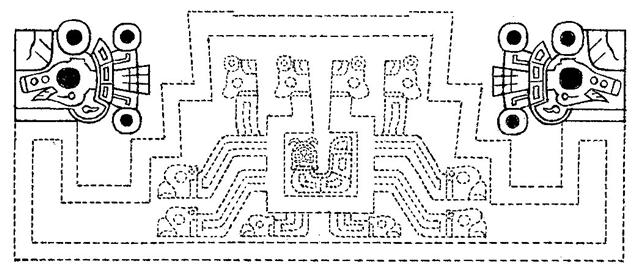I
suppose
we
should
not
bother
too
much
about
the
position
of
heliacal
Sirius
at
the
time
of
Haedus
II
until
we
reach
June
30 -
its
position
at
the
time
of
rongorongo.
Up
until
that
time
the
dates
of
rongorongo
ought
to
have
determined
the
way
the
glyphs
were
designed.
But
the
text
seems
to call
the
attention
of
the
reader
around 75
days
later:
| ●JUNE 29 |
SIRIUS (181) |
●JULY 1 |
2 |
3 (*104) |
 |
 |
 |
 |
 |
| Ga5-1 (111) |
7 * 16 = 8 * 14 |
Ga5-3 |
Ga5-4 |
Ga5-5 |
| θ Crateris (175.0), υ Leonis (175.2), ω Virginis (175.3), ι Crateris (175.5) |
ο Hydrae (176.1) |
ζ Crateris, ξ Virginis (177.0), λ Muscae (177.1), ν Virginis (177.2), μ Muscae (177.8) |
Al Sarfah-10 / Uttara Phalguni-12 / Zibbat A.-17 / Shēpu-arkū sha-A-18 |
Phekda, β Hydrae (179.3), η Crateris (179.9) Deneb Cygni
|
| 93 Leonis (178.0), DENEBOLA (178.3), ALARAPH (178.6) |
| September 12 |
16 * 16 |
14 |
15 |
16 |
| NAKSHATRA DATES: |
| ●DECEMBER 29 |
30 (*284) |
31 |
●JANUARY 1 |
2 |
| λ Piscium (358.0), MANUS CATENATA (358.1), Alrai, θ Phoenicis (358.4), κ Andromedae (358.7) |
ω Aquarii (359.2) |
ψ Andromedae (360.1), σ Phoenicis (360.4) |
φ Pegasi (361.7) |
Dzaneb (362.4) |
| π |
March 15 |
16 (75) |
17 |
18 |
| ●JULY 4 |
5 (186) |
6 (*107) |
7 (¤7) |
 |
 |
 |
 |
| Ga5-6 |
Ga5-7 |
Ga5-8 (118) |
Ga5-9 |
| no star listed (180) |
π Virginis (181.0), θ Crucis (181.5) |
12h (182.6) |
Alchita, Ma Wei (183.1), Minkar (183.7), ρ Centauri (183.9) |
| ο Virginis (182.1), η Crucis (182.5) |
| September 17 (260) |
18 |
19 |
20 (*183) |
| NAKSHATRA DATES: |
| ●JANUARY 3 (368) |
4 |
5 |
6 (¤190) |
| η Tucanae (363.0), ψ Pegasi (363.1), 32 Piscium (363.2), π Phoenicis (363.4), ε Tucanae (363.6), τ Phoenicis (363.9) |
θ Oct. (364.4) |
Al Fargh al Thāni-25 |
Uttara Bhādrapadā-27 / Wall-14 |
| 0h (365.25) |
| Caph, SIRRAH (0.5), ε Phoenicis, γ³ Oct. (0.8) |
ο Oct. (1.3), ALGENIB PEGASI (1.8) |
| March 19 |
20 (*364) |
21 |
22 (446) |
When on Easter Island (and in rongorongo times) the Sun rose with the first stars of Raven it meant spring equinox was around the corner. I therefore think the glyphs could still be read without bothering about where Sirius had been in the past.
But possibly a change was due around 10 days after Ga5-1:
| ●JULY 8 (¤8) |
9 (190) |
 |
 |
| Ga5-10 |
Ga5-11 (121) |
| Pálida (184.6), Megrez (184.9) |
Hasta-13 / Chariot-28 |
| GIENAH (185.1), ε Muscae (185.2), ζ Crucis (185.4), Zaniah (185.9) |
| September 21 (264) |
EQUINOX |
| NAKSHATRA DATES: |
| ●JANUARY 7 (372) |
8 (¤192) |
| χ Pegasi (2.1), θ Andromedae (2.7) |
σ Andromedae (3.0), ζ Tucanae (3.5), ρ Andromedae, π Tucanae (3.7) |
| March 23 (¤266) |
24 (448) |
The Sun had here passed the first of the stars in the beams of the Southern Cross, viz. Pálida (the pale one, δ):

This strangely less bright of the 4 could have been depicted as such on the Gateway of the Sun: 
... Schematic drawing of the 'socle of the central figure of the Sun Door' on which can be seen the 'eyes' with 'Star' signs on the coronas and the 'ring nose' as in the position of the constellation Southern Cross at nightfall at the solstices ...
As if by coincidence Pálida rose with the Sun in day 184 after 0h and in the following day came the southern spring equinox - a week after the double Babylonian ecliptic stations where Leo went away.

I have always wondered what creature was sitting at the rear end of the Sun ship in the night of Nut: 
Now I know, because Wikipedia has a kind of glyph dictionary: 
The rear end (muri) of the Lion was cut off from his front part and only the rear end went safely across the waters of the night. Perhaps his rear end was twisted around: 
|














